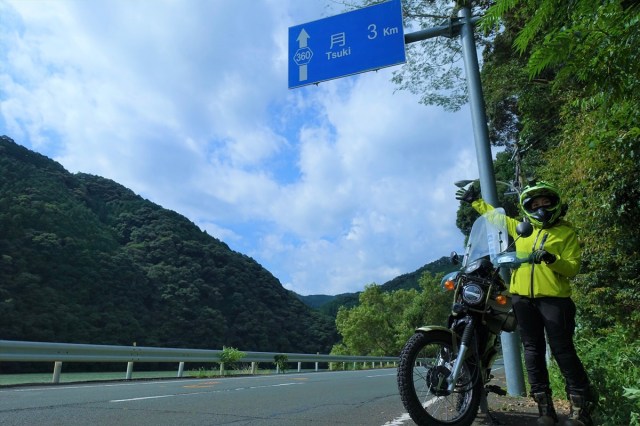
Not “The Moon,” but still cool.
As so many hamburgers have taught us over the years, this is moon-watching season in Japan. September’s full moon is said to be particularly spectacular, especially when accompanied by the gradually cooling evening temperatures.
This year, however, our writer Haruka Takagi decided to do something really special and watch the Full Moon from Moon!
▼ Moon
Properly known by its Japanese name “Tsuki” which translates to “Moon” in English, this village near Hamamatsu City, Shizuoka Prefecture seemed like a very promising moon-watching destination, so she hopped on her bike and set a course for it.
Hamamatsu is a rather big city, so it was surprising to be surrounded by so much nature and tranquility after only a short ride north along Highway 152. Before she knew it, Haruka was approaching Tsuki, as indicated by a rather unique road sign.
▼ Moon/Tsuki: 3 kilometers
It’s pretty cool knowing that “Moon” is only a few kilometers away, though there was nothing particularly lunar about the landscape so far. It wasn’t until she reached a monument at the edge of town that everything was explained.
According to the engraved message, the town was founded by Suzuki Sakyonoshin around the 14th century. After the demise of legendary samurai Kusunoki Masahige in 1336, Suzuki and 11 other of Kusunoki’s followers fled to this area.
One theory is that “Tsuki” is an homage to the purity of Kusunoki’s loyal heart, which was as untainted as a moon shining brightly in the night sky. Another theory is that since there were only 12 people in this town, they thought a cool name like “Moon” might help the community grow.
Crossing the Tsukibashi/”Moon Bridge,” the town doesn’t seem to have grown all that much since then, though technically it is now a part of Hamamatsu City, which is a pretty happening place in its own right.
▼ “Moon Bridge”
Haruka learned that the area is a bit of a boater’s paradise, and before the pandemic crippled most interscholastic events, this was a mecca for student rowing teams.
Haruka spoke with the head of a rowing school in the area who said with a laugh; “Everyone is attracted to the name ‘Moon’ but there isn’t very much here.” He had a point, but Haruka thought that was a big part of Moon’s charm.
▼ The rowing school of Tsuki
▼ There are also pamphlets around the area with the slogan: “I row to Moon on weekends.”
Next, she headed to the local temple called Kaizoji. The gate has a sign that translates to “moonlight mountain.”
This temple is said to have been established by Suzuki himself, and his grave can still be seen inside.
The garden is very well-kept and a monk was sweeping when Haruka arrived. He gave her a warm and friendly greeting despite her sudden appearance.
Our writer’s next stop was the Shizuoka Prefectural Park Forest House, where she was told she could buy some “Moons” of her very own.
Upon entering the building they were easy to find and neatly arranged on a table.
These “Moons,” however, are mini-cheesecakes, called “Tsuki” in Japanese, sold in boxes of four. It was a missed opportunity to make them out of green cheese, but they were still very good.
Next to it there were stacks of books, titled Three Kilometers to Moon. It was just like the sign that Haruka saw on the way in!
Apparently that same sign inspired Shin Iyohara to craft a story about a man who was drawn to the town after a twist of fate made him see that eye-catching road sign.
As the dusk drew close the autumn air of Tsuki, which is high up in the hills of Hamamatsu, was getting chilly, so Haruka decided to head back home with her cakes and a copy of the book.
She never did watch the harvest moon this year, but that’s okay, she was more than satisfied with the “Moon” that she had already seen.
Photos © SoraNews24
● Want to hear about SoraNews24’s latest articles as soon as they’re published? Follow us on Facebook and Twitter!
[ Read in Japanese ]